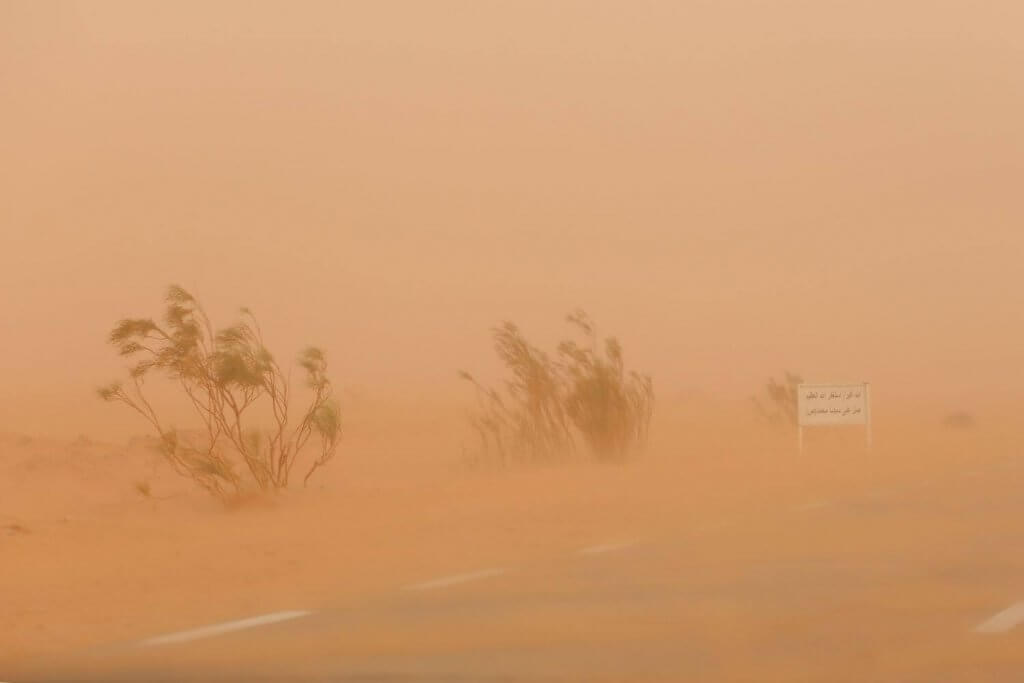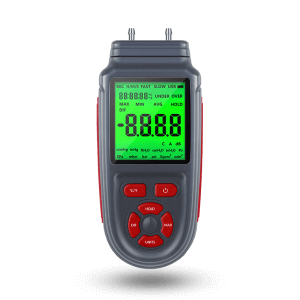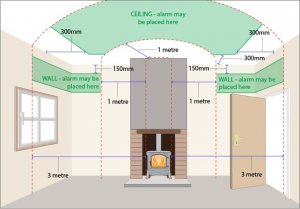Wiping up, waving away, vacuuming away – this is how most people relate to dust. A close look at the inconspicuous, gray substance reveals an amazing microcosm whose “inhabitants” not only defy gravity but also fertilize oceans, influence the weather, and can be surprisingly explosive.

Dust is what floats and sticks
The term dust is a collective term for the smallest solid particles of different sizes and different origins. What is thrown up by the wind on the side of the road on a hot summer day, for example, a mixture of sand, sea salt, ash, soot, tiny plant fibers, pollen, bacteria and much more. What all these particles have in common: They are just a touch of nothing. Coarse grains of dust are about 0.1 millimeters in size, which is a little more than the thickness of a human hair. Particulate matter is smaller than 10 micrometers (µm), which is less than one-hundredth of a millimeter. And the so-called ultrafine dust is a hundred times smaller and consists of only a handful of molecules.
This microcosm seems to have its own set of laws. Because of its small size, dust is exposed to the forces of nature differently than objects in the macroscopic world. Because dust particles have a large surface area with relatively little mass. As a result, gravity acts less on them: dust floats.
In return, surface forces act all the more strongly on the tiny particles. Dust particles therefore adhere extremely well. This is annoying when dusting, but this property of dust is useful in other areas and ensures, for example, that the color particles of a colored pencil stick to the paper or baby powder to the skin.
Where dust is kicked up everywhere
Dust particles are constantly being created almost everywhere – not just in the living room at home. In nature, soil erosion, volcanic eruptions and the raising of sea salt over the oceans contribute to this process. But plants are also an important source of dust. Not only do they release pollen that can fly up to a hundred kilometers with the wind, they also produce trace gases. These trace gases can also become dust particles in the atmosphere as a result of chemical reactions.
Humans also create dust through combustion processes, for example in industry, in car traffic or in the home with stoves or heating. Cows and pigs are also dust producers, whose legacies, especially in the form of liquid manure, contain a lot of ammonia. In the air, this trace gas combines with pollutants from road traffic to form fine dust particles. According to estimates by scientists, up to 45 percent of fine dust is caused by agriculture.
Granules far traveled
Another property of dust is its mobility. Grains of dust not only get through the smallest crack, they can also spread over many thousands of kilometers. The desert dust plays a special role. From the Sahara alone, around 1.5 billion tons of the finest desert sand are whirled into the atmosphere every year. The particles containing iron and phosphorus travel across the Atlantic with the trade wind. On their way, they not only supply the ocean with nutrients and thus promote plankton growth, but also fertilize the Amazon rainforest in South America.
Atmospheric fumes
The dust in the atmosphere is of particular interest to science. In his theory of colors in 1810, Johann Wolfgang von Goethe assumed that the blue color came about as a result of the scattering of sunlight on “atmospheric vapors”. A thesis that the physicist John William Rayleigh confirmed in 1871: Particles in the atmosphere scatter the short-wave blue portion of sunlight particularly strongly.
Recent findings show that the light-refracting properties of dust particles also have a significant influence on climate events. Dark dust particles, such as soot, store the energy of sunlight and thus heat up the atmosphere. Bright particles, on the other hand, such as sea salt, reflect the light back into space. This cooling effect predominates.
Tiny Weather Makers
Without dust there would be no clouds and no rain. In a particle-free atmosphere, water vapor rising above the earth would never condense into droplets. It needs dust particles as so-called condensation nuclei. The particles have an effect similar to putting a lid on a pot of boiling water. The gaseous water vapor sticks to them and liquefies. Small drops form and combine with other drops. This is how a rain cloud is formed.
Explosive potential
Small dust particles can have a surprisingly large effect: dust explosion, which often happens in mills and bakeries, where large amounts of flour dust are floating in the air. The finer the dust is ground, the more reactive it becomes. The comminution produces particles with a large surface area, which absorb heat well, ignite rapidly, and oxidize extremely quickly. A spark can be enough to ignite floating flour dust and cause an explosion.
Such a dust explosion works not only with flour, but also with very fine coffee, sugar and steel dust as well as club moss spores. Pyrotechnics use this property of small particles for controlled fire effects.
So dust is much more than just the gray layer on the bookshelf. It is omnipresent, extremely mobile, responsive and seemingly obeys its own laws. Without it, many natural phenomena would be unthinkable.





